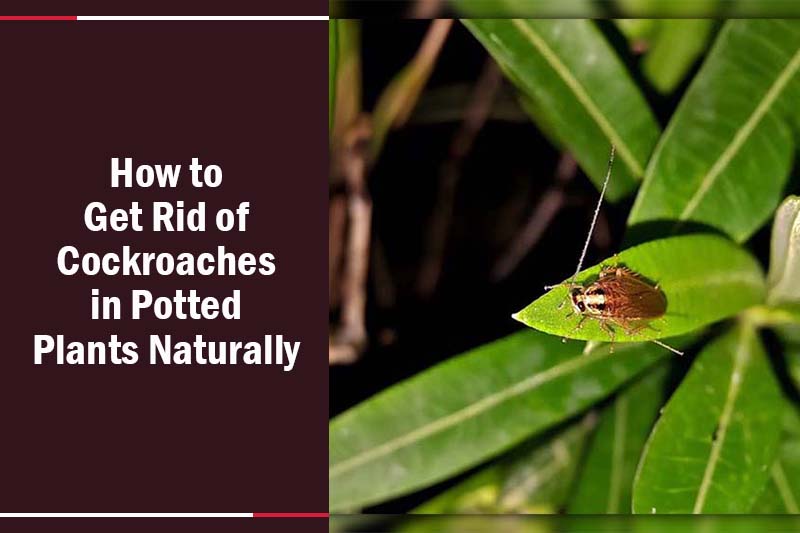Do you hate finding cockroaches in potted plants?
In this blog, you will learn how to identify, eliminate, and prevent cockroaches in potted plants.

1. How to find roaches in a potted house plant?
At night, you will find roaches hiding under the leaves while feeding on the plant. They will crawl on the stem and feed on the leaves especially if they are not fresh.
During the day, they will move to the base of a potted plant. Once there, they will hide in the soil or along the pot walls where it is dark and moist.
They thrive in moisture and that is one of the major reasons why an over-watered potted plant will attract roaches.
Read more Green cockroach: Exploring the Colorful Cuban Cockroach

2. How to get rid of roaches in potted house plants?
Here are the main tricks on how to naturally avoid plant roaches without causing any harm to the plants:
Control Moisture
Ensure your potted plants dry completely between waterings. Roaches are attracted to excess moisture, so avoiding standing water in the bottom tray helps discourage them.
Use Diatomaceous Earth
Sprinkle a thin layer of diatomaceous earth over the soil’s surface. Also, apply more of this fine powder weekly until the roaches are no longer present. This natural substance is effective against pests but safe for your plants.
Petroleum Jelly Jar Traps
Prepare a baby food jar for each potted plant. Coat the entire inside of the jar with petroleum jelly and place it on its side on the soil surface, ensuring the jelly side is closest to the soil. Add a 1-inch piece of banana peel inside.
Roaches will be lured in but unable to escape due to the petroleum jelly. At the end of the day, seal the jar with its lid and freeze it overnight before discarding it the next day.
Read more Smoky brown roach: Invader Insights & Home Defense.

3. Do Cockroaches eat indoor plants?
The answer is yes, the American cockroach can feed on a house plant’s leaves when they lack food or anything to eat.
But what do cockroaches eat normally and why do they eat plants?
The answer is that cockroaches are omnivorous and will eat almost anything that contains organic matter, such as crumbs, spills, leftovers, pet food, garbage, paper, glue, and even feces.
However, if your house is clean and they do not find any of these food sources, they will go for the plants.
This means that eating your potted plants will be their last resort when they are starving.
Read more Roaches in laptop: Quick Fixes & Prevention Tips!
Conclusion
You have learned the answer to the question: cockroaches in potted plants? You have also learned how to identify, eliminate, and prevent cockroaches in potted plants.
If you want to learn more about cockroaches and how to deal with them, check out our other blogs from Pestweek.

Calina Mabel has over 15 years of experience in the field of journalism and communications. Currently, Calina Mabel is the Content Writer for categories such as Cockroach, Ants, Bed Bugs, Mosquito, Rodent, Termite, and Flies on Pestweek.com. She aims to build content for these categories with a focus on providing valuable and accessible information to readers, in order to create the world’s largest knowledge community about Pests.
All content written by Calina Mabel has been reviewed by Emily Carter.

